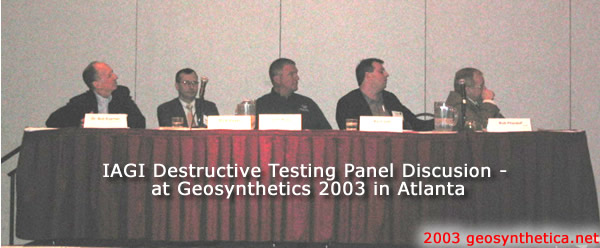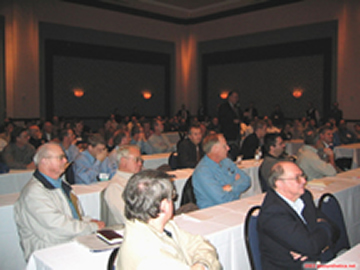
A full-house audience of about 200 attended the IAGI discussion panel as a means to eliminate cutting destructive samples in geomembrane seams. Suggested actions that could be used to open up the frequency of destructive testing included: successful tests; tape to keep roll edges clean and dry; using IAGI certified welders; high pressure air channel tests; ultrasonic and infrared thermograph tests that examine every mm of seam; and use of electrical resistivity tests to evaluate the complete liner. Emphasis was placed on the benefits of electrical testing when the protective soil/drainage layer has been placed on a landfill liner. Not unexpectedly, almost all of the discussion was based on HDPE and landfill lining systems and the fact that leak surveys have shown most damage not to be on seams, but at stone punctures and equipment tears elsewhere on the liner. However, it should be remembered that there are only about 4000 landfills in the US, but there are about 200,000 industrial ponds, so there is still a significant area of liner where the majority of leaks will be associated with seams.












